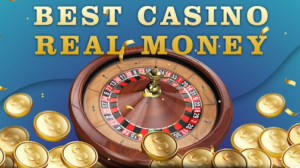As technology has progressed, so too has the world of slot machines. The evolution of slots has seen a transition from classic mechanical machines to modern digital video slots, offering a journey through time and innovation. Let’s explore this journey and the key characteristics of each era.
From Classic to Video Slots: A Journey Through Time
- Classic Slots:
The classic slot machine era began in the late 19th century with the invention of the first mechanical slot by Charles Fey. These machines featured three reels and a limited number of symbols, often including fruits, bells, and lucky sevens. Mechanical levers were used to start the spin, and winning combinations resulted in the release of coins or tokens. Classic slots evoke a sense of nostalgia and simplicity, with their vintage aesthetics and straightforward gameplay.
- Electromechanical Slots:
In the 1960s and 1970s, electromechanical slot machines emerged, incorporating electrically powered components alongside the mechanical workings. These machines featured more sophisticated mechanisms, including hopper payout systems and the ability to offer larger payouts due to the addition of more symbols on the reels. The electromechanical era laid the groundwork for future innovations in slot machine technology.
- Video Slots:
The rise of microprocessors and digital technology in the 1980s paved the way for the creation of video slots. Video slots replaced mechanical reels with video screens, offering more variety in themes, graphics, and bonus features. This allowed for greater creativity in game design and the incorporation of interactive elements, such as bonus rounds, free spins, and vibrant animations. Video slots became increasingly popular due to their enhanced visual and audio experiences, along with their potential for larger jackpots.
- Online Slots:
The advent of the internet in the 1990s opened up a whole new world for slots enthusiasts with the introduction of online slots. Players could now access a vast selection of slot games from the comfort of their own homes. Online slots offered the convenience of playing anytime, anywhere, and presented additional benefits such as higher payout percentages, a wider variety of games, and the ability to play for free or with real money.
- Mobile Slots:
The widespread adoption of smartphones and tablets in the 2000s led to the development of mobile slots. Players could now enjoy their favorite slot games on the go, with responsive designs and optimized interfaces for touchscreens. Mobile slots retain the features and immersive gameplay of video slots but deliver them in a portable format, offering convenience and entertainment on mobile devices.
- Virtual Reality (VR) Slots:
The most recent innovation in the world of slots is the emergence of virtual reality technology. VR slots provide an immersive experience, allowing players to step into a virtual casino and interact with the game environment. With VR headsets and controllers, players can spin the reels, engage in bonus features, and explore virtual casino settings, providing a truly captivating and immersive gaming experience.
From the simplicity of classic slots to the innovation of VR slots, the journey through time showcases the evolution and advancements in slot machine technology. Each era brings its own unique charm and gaming experiences, catering to diverse player preferences. Regardless of the era, slots continue to offer thrilling entertainment and the potential for big wins, making them a beloved casino staple that transcends time.


